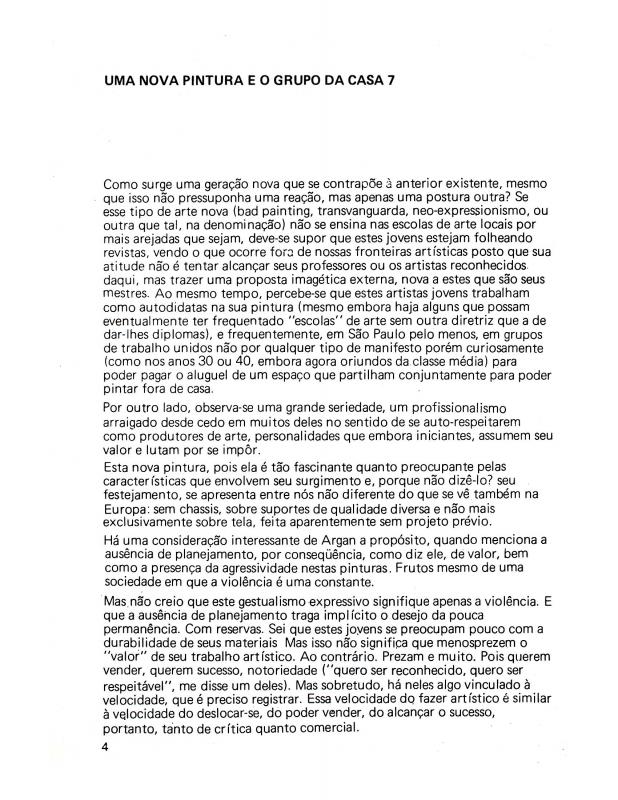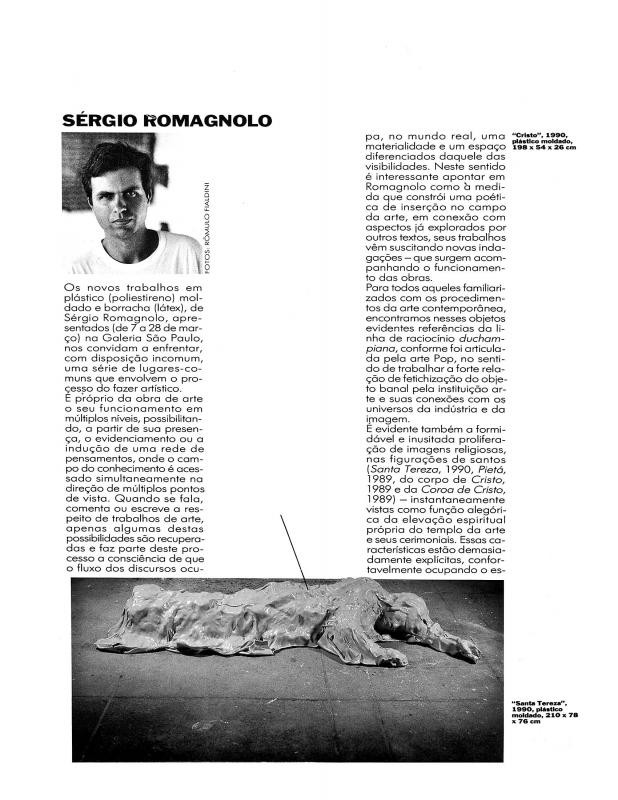In the seventies, historian and art critic Aracy Amaral (b. 1930) began working as a researcher, professor, curator, and director of cultural institutions. Due to her extensive work in Brazilian art criticism over the course of four decades, she is a crucial figure in Brazilian art.
Another text by Amaral on painting from these years is “Uma nova pintura e o grupo da casa 7” (see ICAA digital archive doc. no. 1111246).
Artist, professor, critic, and curator Sergio Romagnolo (b. 1957) emerged on the Brazilian art scene in the eighties. In the nineties, he participated in the Visorama group while also editing the magazine Ítem. He was the coordinator of AGORA (Agência de Organismos Artísticos), and later, of the Espaço Agora-Capacete. He was one of the curators of Panorama de Arte Brasileira (2001). His work was included in the 2007 documenta in Kassel.
Leda Catunda (b. 1961) emerged on the Brazilian art scene in the context of the “Geração 80.” The themes of her pictorial work mostly revolve around kitsch and the feminine.
Ciro Cozzolino (b. 1959) was one of the most outstanding painters to emerge in the context of the “retorno à pintura.” His work, which enjoys a strong position in the art market for Brazilian painting of that generation, focuses on the visual aspect of mass culture.
On Brazilian art from the eighties, see the catalogue to the exhibition Como vai você, Geração 80? (July 1984) with text by Jorge Guinle Filho, and the book by Roberto Pontual, entitled Explode Geração (Río de Janeiro: Avenir, 1984). In his work, Pontual attempts to articulate his personal, even literary, perspective of Brazilian art from the eighties, specifically addressing artists such as Mónica Nador and Ana Tavares, in São Paulo, and Catunda, Romagnolo and Beatriz Milhazes, in Rio. See the manifesto in which he identifies with that generation [ICAA digital archive (doc. no. 1110501)]. In his text “Sérgio Romagnolo” (doc. no. 1111249), artist and critic Ricardo Basbaum discusses a case that furthers understanding of what is called the “Geração 80,” an example that is not limited to the “return to painting,” but also encompasses other media like sculpture. Basbaum presents a theory of the aims of that generation in “Pintura dos anos 80: algumas observações críticas” (doc. no. 1110972).




